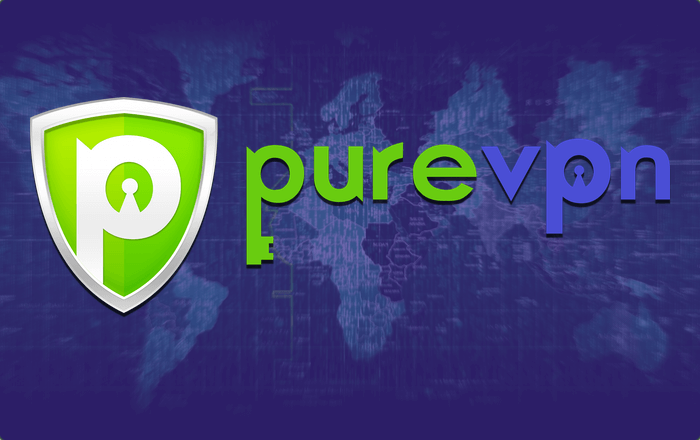PureVPN review: fast servers and lots of features at just $2.08/month

We’ve talked about VPN’s in the past, they are great tools to help keep what you’re doing online secure. Today I’ll be reviewing PureVPN.
The first thing I noticed when signing up for PureVPN was that the password can only be 12 characters max (and no special characters)–which is really weird and unsecure, I have no idea why they have that limit imposed. Nonetheless, I continued and once signed up, I was provided with a PureVPN username which is not to be confused with the email you signed up with–the username is separate and will be required to login to the apps along with your password. Again, I’m not sure why they provide a separate username, but that’s how they do it. Your email is used to login to the web dashboard and your PureVPN username is used to login to the apps.
PureVPN doesn’t offer a free version or a free trial of their product, however, they do offer a seven-day money-back guarantee. One thing I really like about PureVPN’s pricing structure is that it doesn’t lock features behind different price tiers, instead offering the same capabilities with different billing cycles. PureVPN costs $10.95 per month, though there are usually discounts in play. You can also opt to pay $53.70 for a six-month subscription, or $70.80 for a two-year term. However, being that we’re currently in the holiday season, the company has a special Cyber Monday deal where you can get PureVPN for as low as $2.08 per month with a two year plan billed at $49.99. Additionally, if you do a simple Google search for PureVPN coupons or go to a coupons and deals site like eDealFinder.

Subscription payments can be made via just about every means you could desire: credit card, AliPay, Bitcoin, Cashu, PaymentWall, or PayPal. The service also accepts nearly a dozen other cryptocurrencies. You can even pay with gift cards from popular stores such as Starbucks.
PureVPN also offers some optional add-on features: for an additional $1.99 per month you get a NAT Firewall and for another $1.99 you can buy a dedicated IP address. These two add-ons are not necessary for most users of the service and the app provides an information dialog explaining whether or not these features are right for you.
No matter what plan you choose, you get five licenses to spread across all your devices. PureVPN has clients for macOS, Windows, and Linux as well as mobile clients for Android and iOS. The company also released a Chrome plugin to the list of supported platforms. Using the plugin only secures the web traffic of your browser, which might be ideal for some users. It also blocks ads and advertising trackers, and has some malware protection capabilities. Interestingly, these are features not found in the core VPN app. The plugin also blocks some WebRTC elements which allow websites to use certain elements of your computer—such as webcam or microphone, which is great for those who are super privacy conscious.
I’m always happy to see companies adding more features, but it’s worth noting that PureVPN’s malware, advertising, and tracker blockers are powered by blacklists so they’re not foolproof. While that’s a good start, it won’t hold a candle to the advanced malware detection and removal tools found in stand-alone antivirus solutions, so definitely use PureVPN as an additional layer of security–not a complete replacement.
One of the features PureVPN boasts about is its ability to allow you to stream video content while using its network. In my tests, YouTube videos played seamlessly, without any hiccups or buffering when connected to the fast streaming servers. That being said, don’t expect to be able to watch Netflix while using PureVPN, I had no such luck despite it being advertised.
Other benefits include the fact PureVPN supports P2P file sharing and BitTorrent on more than 200 of its servers (they have 750+ total). The Split Tunneling feature (which is really nifty) also lets you select specific traffic to go through the VPN. This feature lets you keep certain activities secure and allow more data-hungry but less sensitive functions to get the direct access they need.
I did experience a few issues with PureVPN in my tests though, often times I found it taking abnormally long to connect to one of their servers. Other times I had trouble staying connected to the VPN, there were at least two separate occasions in my tests that I randomly got disconnected from PureVPN on my iPhone. I’d love to see PureVPN add some kind of notification for when you get disconnected from the VPN server as I only found out by going back into the app and seeing I wasn’t connected anymore.
Additionally, the design of the PureVPN apps could use some updating. In addition to it needing support for the iPhone X, It’s also a bit confusing (you shouldn’t have to tap the disconnect icon and then tap disconnect to actually disconnect) and the background images they include in the app (e.g. see the screenshot below of the London city bus) are distracting and take away from the app.
Overall, PureVPN is a decent VPN service with fast servers, a lot of features, and low price points. It’s worth checking out, and of course, if you don’t like it, you have that seven day money-back guarantee.